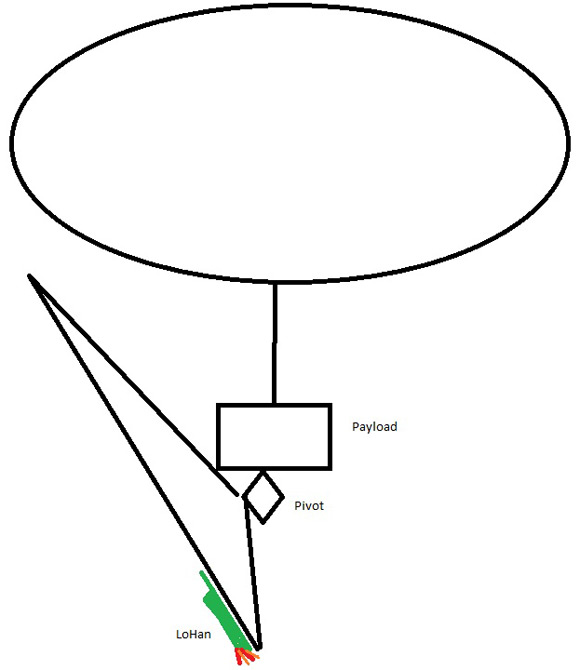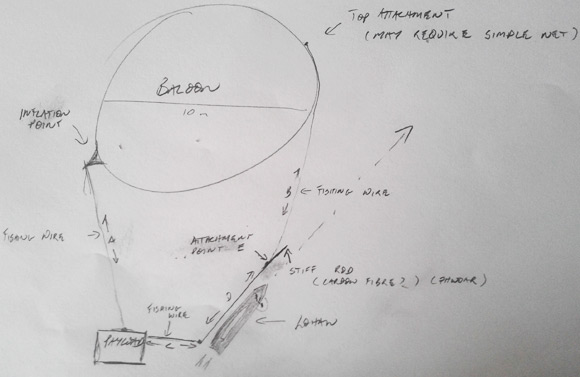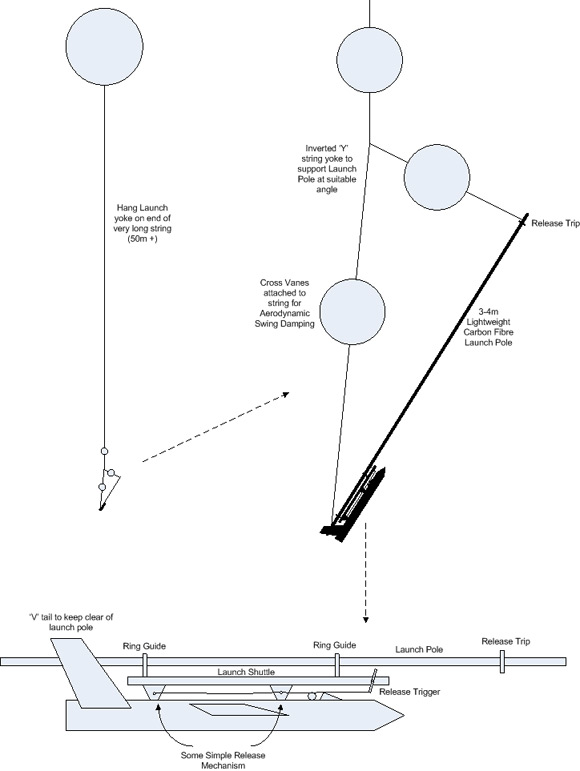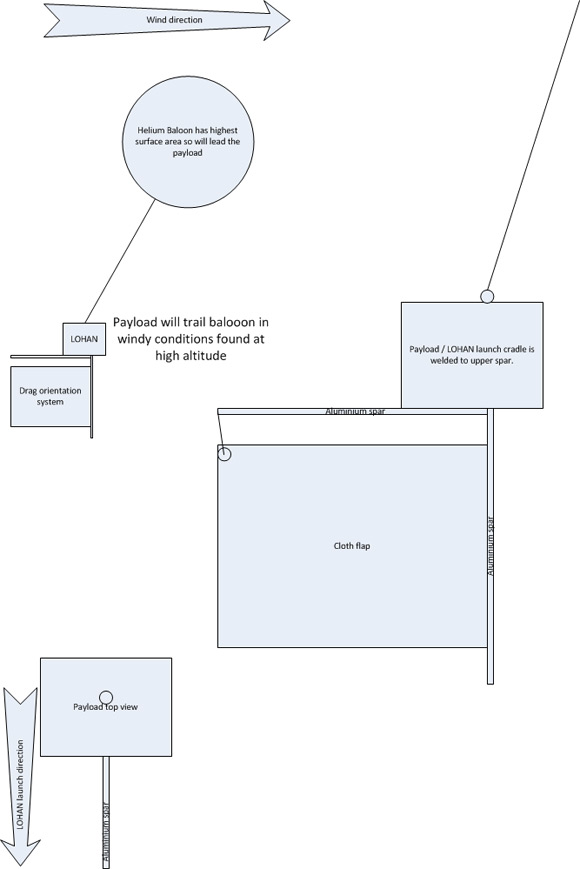This article is more than 1 year old
LOHAN team buried under ballockets
Click here for a shedload of Reg reader spaceplane launch concepts
DMoz liked the idea of a pivoted launch rig...

...and here's Rob's variation on the theme:

He explains: "Rather than using a counter weight, it just uses the width of the balloon to get your separation. It has the neat property that it throws away your assumption that the balloon will float upright.
"It does require a top attachment to the balloon. I'm not sure if you can glue an attachment to the latex, but if not, a lightweight net around the balloon would do the job of providing a top attachment point.
"You'd have to experiment a bit with the geometry once you knew the weight of the payload and craft, but by adjusting lengths A, B, C, D and the position of attachment point E, you can achieve pretty much any launch angle with minimal additional weight compared to attaching LOHAN to the payload directly."
Gary Keall, meanwhile, suggests putting the launch platform "on the end of a long piece of (say kite) string to clear the balloon (I'll claim the original suggestion of that in the comments) – I'd say 50 if not 100m if the balloon expands to 10s of m across".

He continues: "My launch platform would simply be a long lightweight carbon fibre pole (fishing pole?) – about 3-4m I suggest. This is suspended from each end by a string yoke in an asymmetric 'Y' shape to hold the pole at the required launch angle, as shown. I don't think the launch needs to be that near vertical – the ~30° angle show still has plenty of vertical component, and any more vertical and the initial roll orientation of the aircraft will be less defined. The exact angle of dangle depends on where the centre of gravity of the assembly is – I've drawn it assuming most of the mass is in the aircraft at the bottom end.
"As I've drawn it, I envisaged the aircraft attached to a lightweight launch shuttle which slides up the pole on a pair of ring guides or something similar. The aircraft is released from the shuttle by a lever trigger hitting a trip 'noggin' at the end of the pole. This yanks a piece of string which pulls release pins or something like that."
While Gary's design features swing damping vanes, as you can see, Angus Wood suggested using the wind itself to control the relative positions of balloon and payload. He says: "The basic idea is to take advantage of the high wind conditions to create a situation where one is (almost) guaranteed to be able to know where the balloon is in relation to the launcher."

He continues: "Given that the balloon will have the highest surface area it will catch the most wind and so will always be 'ahead' of the payload and LOHAN. The next step is to orient the rotation of payload in respect to the balloon. This is done by attaching a rudder-like flap of cloth to some aluminium spars which are in turn rigidly attached to the launcher.
"The net effect should be to always aim the LOHAN launcher in to the wind (which is beneficial) and guaranteeing that it will always be pointed at maximal angle away from the helium balloon."
